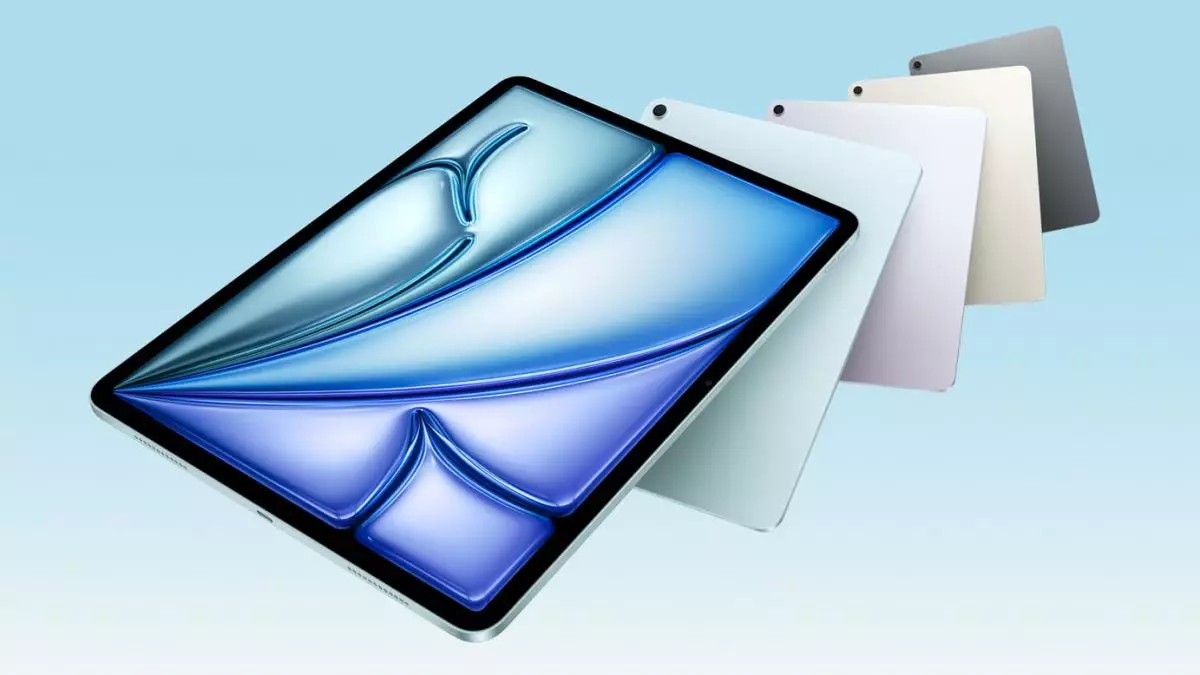Apple’s latest unveiling of the new iPad Air models, featuring both 11-inch and 13-inch variants powered by the advanced M3 chip, marks a significant evolution in the tablet landscape. Available for preorder from March 12, these new iPads start at $599 for the 11-inch model and $799 for the 13-inch configuration, demonstrating Apple’s commitment to catering to a broad range of users—from students to professional creators.
The iPad Air is introduced in four color options—blue, purple, starlight, and space gray—adding a personal touch for users. With storage options ranging from 128GB to a stunning 1TB, Apple offers ample flexibility for users who demand high performance and extensive storage for applications, files, and media.
The performance enhancements brought by the new M3 chip are nothing short of remarkable. Apple boasts that the iPad Air with M3 offers nearly double the speed of its predecessor equipped with the M1 chip, and an astonishing 3.5 times the performance compared to the older A14 Bionic chip. Notably, Apple has made these comparisons with older models but has not released specific benchmarks against the M2 version launched last year.
This performance leap is particularly relevant for professional users and creatives engaging in complex tasks like video editing or 3D rendering. With its 9-core GPU, the iPad Air delivers up to 40% faster graphics performance compared to the M1, positioning it as a powerful portable machine capable of handling demanding applications. Furthermore, the Neural Engine has received significant upgrades, achieving up to 60% faster operation for AI-driven tasks.
Alongside the new iPad Air, Apple has rolled out an updated version of the Magic Keyboard, which is engineered to optimize user experience. The keyboard now features a more extensive trackpad and a new 14-key function row, streamlining user interaction with essential controls like screen brightness and volume. The magnetic attachment and Smart Connector technology facilitate seamless connectivity, eliminating the need for Bluetooth pairing.
Priced at $269 for the 11-inch model and $319 for the 13-inch, the Magic Keyboard promises to be a valuable companion for those leveraging their iPads for productivity. The machined aluminum hinge not only embodies Apple’s aesthetics but also enhances the stability of the tablet, providing users with a reliable workstation on the go.
Apple’s latest advancements come with a competitive edge, particularly as the company boasts a substantial performance increase over leading Android tablets. Claims suggest that the new iPad powered by the A16 chip is up to six times faster than the best-selling Android device, targeting customers dissatisfied with performance limitations in their current devices.
However, while these claims of dominance in the tablet market are compelling, one must question whether Apple is prioritizing differentiation and innovation or simply trying to maintain its grip on the existing market. The omission of benchmarks against the M2 chip raises eyebrows. Those looking to upgrade may wonder about the tangible benefits that the M3 chip can offer over its predecessor, problematizing the “must-have” factor that Apple typically prides itself on instilling in consumer minds.
In a statement by Bob Borchers, Apple’s vice president of Worldwide Product Marketing, he emphasized the versatility of the new iPad Air with M3, aligning it with the diverse needs of college students using the Apple Pencil Pro, as well as content creators and frequent travelers requiring portable power. This presentation paints the iPad as an all-in-one device, capable of tackling various tasks—an attractive feature for users looking for simplicity in functionality.
Yet, as enticing as Apple’s new offering seems, potential buyers should weigh their own specific needs against the offered upgrades. The new iPad Air appeals to users in search of a robust performance machine, but it’s also crucial to consider whether features support the use cases for individual users, particularly given the fast-paced development cycles of competing technology. The iPad Air with M3 certainly raises the bar, but the ever-evolving tech landscape requires consumers to stay discerning and informed.

